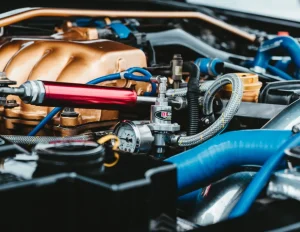🚗 Introduction
Over the past few years, both buyers and dealerships have noticed a steady rise in car prices, whether for brand-new models or used vehicles. Many customers walk into showrooms expecting deals, only to find limited inventory and surprisingly high sticker prices. But what’s causing this spike? The answer isn’t simple. It involves a mixture of global economics, supply chain disruptions, technological upgrades, environmental policies, and evolving consumer demands. In this post, we’ll break down why car prices are increasing and what this means for vehicle owners, new buyers, and mechanics alike.
🌐 The Global Picture: A Complex Set of Influences
Several global events and economic shifts have led to today’s automotive pricing trends. The COVID-19 pandemic initially disrupted production lines, causing factories to shut down or limit output for months. This created a backlog in inventory. Then, the global semiconductor chip shortage hit—affecting all electronics, including cars, which now rely heavily on chips for infotainment systems, sensors, engine control units, and more. The result? Manufacturers couldn’t meet demand, and limited availability drove prices up. On top of that, inflation and increased shipping costs have made everything more expensive—from raw materials to final delivery.
💰 What’s Driving Prices in 2024?
While the supply chain is gradually recovering, prices have not returned to pre-pandemic levels. Here’s why:
🔋 Advanced Technology Integration
Modern cars are now equipped with hybrid systems, electric components, autonomous driving sensors, and advanced safety features. Even basic models are becoming smarter, but this comes at a cost. These new parts require precision engineering, specialized labor, and more expensive materials.
♻️ Environmental Regulations
Many regions, particularly in the U.S. and Europe, have implemented strict emissions standards and are phasing out older engine technologies. Manufacturers must invest heavily in compliance, R&D, and green technologies like hydrogen fuel systems, EVs, and alternative fuels—all of which raise production costs.
🏗️ Labor and Material Costs
Steel, aluminum, rubber, and lithium (for batteries) have all increased in price. In parallel, labor shortages have driven wages higher, especially for skilled workers in automotive plants and high-tech component manufacturers.
🔍 New vs. Used: A Market Disruption
Traditionally, used cars offered affordable alternatives to new ones. However, the last few years have flipped the equation. With fewer new vehicles available, demand shifted to the used market, pushing prices up. In some cases, used car prices reached or exceeded their original MSRP. While the trend has started to level off in 2024, it still hasn’t fully corrected, and supply constraints continue to influence pricing behavior across the board.
📊 Table: Factors Influencing Car Prices
| Factor | Impact on Price | Why It Matters |
|---|---|---|
| Chip Shortage | High | Cars rely on dozens of microchips |
| Inflation | High | Increases cost of production and shipping |
| Environmental Compliance | Moderate to High | Adds R&D and manufacturing complexity |
| Advanced Tech Features | Very High | EVs, hybrid systems, and sensors cost more |
| Labor/Material Shortage | Moderate | Raises cost across supply chain |
| Consumer Demand | High | More demand with limited inventory |
🚘 How Luxury Modifications Affect Price Perception
Many modern vehicles—especially higher-end and even mid-range models—are now equipped with modifications that used to be reserved for custom builds. These include integrated turbochargers, natural gas systems, nitrogen boosters, and performance tuning modules. In addition, highly stylized metallic engine bays with aluminum or chrome finishes contribute to the aesthetic appeal and the final price tag. While these enhancements offer efficiency, power, and fuel savings, they also increase cost. Even models focused on affordability now carry elements of premium design, which influence market perception and drive up average transaction values.
📈 Should You Wait to Buy?
If you’re in the market for a vehicle, you may be wondering whether it’s better to wait or buy now. While prices may soften slightly over the next year as supply normalizes, new environmental standards and tech trends suggest that car prices will likely remain high for the foreseeable future. If you find a vehicle that meets your needs and budget today, it may be wise to act—especially if you plan to finance it before interest rates climb further.
✅ Conclusion
Car prices are indeed increasing—and it’s not just a temporary trend. Between global shortages, rising material costs, environmental policies, and tech upgrades, the automotive industry is evolving rapidly. Whether you’re shopping for a vehicle, offering mechanical services, or simply following market shifts, understanding these changes will help you make smarter decisions. One thing is clear: the age of the affordable, simple car is fading—and the future belongs to smart, efficient, and highly engineered vehicles.

